As states begin to ease more coronavirus-related restrictions and nonessential businesses continue to reopen, many companies need to focus on conducting employee health screenings so their employees can safely return to work.
The Centers for Disease Control and Prevention provides reliable, up-to-date guidance for businesses regarding required business practices and testing protocols. But how each company rolls out its screening processes will largely depend on state and local orders and guidelines.
The six tips here address best practices for employee health screenings — with the following assumptions:
- You’re aware of and following your state and local health and safety guidelines.
- Due to the evolving nature of the pandemic and associated protocols, you’re monitoring the changing situation and keeping up to date on any new rules and regulations in your area.
6 tips for an effective employee health screening plan
1. Familiarize yourself with your state and local laws regarding health screening protocols for returning employees. You can often find this info at the Department of Health and Human Services for your state.
Another resource is the U.S. Chamber of Commerce, where you can find up-to-date state-by-state business reopening guidance, including employee screening and social distancing guidelines, PPE and mask requirements, quarantine requirements, vaccine strategies, and more for each state.
2. Learn the legalities involved in screening and testing employees. Understanding the legal implications of screening and testing is necessary to avoid violating labor, disability, or employment laws.
The U.S. Equal Employment Opportunity Commission offers guidance regarding what you need to know about COVID-19 and various laws here. You may also find the Occupational Safety and Health Administration’s downloadable Guidance on Returning to Work helpful.
3. Determine the kind of testing your company will offer, based on federal, state, and local guidelines. According to the CDC, you should base your choice of test on what you want to accomplish — for example, diagnosing or screening — and other considerations — like the need for rapid results.
The CDC also advises that using screening for “asymptomatic workers without known or suspected exposure to SARS-CoV-2 in select non-healthcare settings” can be effective. Learn more about testing in non-healthcare workplaces on the CDC website, which was updated as recently as March 17, 2021.
Screening and testing can include temperature checks, COVID-19 testing, self-certification or self-declaration, or all three. The CDC recommends conducting screening testing at least weekly.
4. Document your company policy regarding employee health screenings, and develop your communication plan.
Once you’ve determined your employee health screening policy and how you’ll implement it based on the first three tips, create a communication plan to share the details with employees and other key stakeholders. It’s important that everyone knows what the expectations are and understands their role in preventing the spread of the virus.
5. Use digital forms to collect and organize employee screening and testing information and digital tables to track data. Jotform’s resources allow your company to do this with ease. The following table and form templates give you the ability to screen employees and track data so you can keep everyone healthy and safe:
- Employee COVID-19 self screening questionnaire. This form asks employees if they have any coronavirus symptoms, whether they’ve been in contact with anyone who’s been diagnosed, and if they’ve traveled internationally. The questionnaire also guides employees on further actions to take based on their responses.
- Coronavirus self declaration form. This form allows employees who have contracted COVID-19 to report their medical status so they can keep from spreading the virus to others in the workplace. The form asks for contact details, recent travel history, names of people the employee has been in contact with, symptoms they’re experiencing, and their ability to work from home.
- Screening checklist for visitors and employees. You can use this form to track contact details and symptoms of each visitor or employee who has entered company premises during the pandemic. The form is easy to complete on any device. It includes fields for names, symptoms, and temperature checks.
- Coronavirus screening form. Healthcare organizations can use this form to track their patients’ symptoms, either for diagnosing them with COVID-19 or for contact tracing. You can customize the form to fit your practice’s branding, and you can embed it on your website or share it with your patients directly so they can fill it out on their devices. Your Jotform account stores responses securely, and you can upgrade to HIPAA-friendly protection or apply for our Coronavirus Responder Program.
- COVID-19 quarantine tracker. This template allows you to organize coronavirus quarantine and leave requests in an online table. Connect it with our COVID-19 leave request form to collect leave requests and store them in your table automatically. Then use Jotform Tables to view, edit, download, or share requests with your colleagues, making it easier to track and approve leave requests online. You can change the design of the tracker by adding new columns, rearranging the layout, uploading files, and splitting information into separate tabs.
The templates are fully customizable, and our drag-and-drop Form Builder gives you the ability to change, add, or remove fields as well as change fonts, color, and background or add conditional logic and images — with no coding required. Plus, Jotform integrates with 100+ popular apps to organize submissions in the other accounts you rely on and offers a HIPAA-friendly option for healthcare professionals.
6. Consider practicalities for post-screening and testing. Finally, communicate with employees about when they’ll receive test results, what they should do next depending on their results, how you’ll use screening and testing results, including privacy considerations with respect to confidential medical information, and so on.
Pandemic guidelines related to reopening businesses and protecting the health and safety of employees are still evolving, but a year on, a few best practices and protocols are uniform and stable. And with the help of Jotform, plus the six tips above, you’ll be able to take the proper precautions, keep your employees safe and healthy, and reduce the spread of the coronavirus.




































































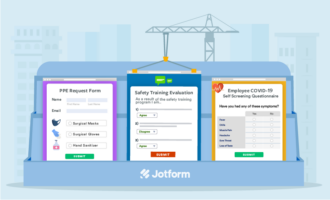







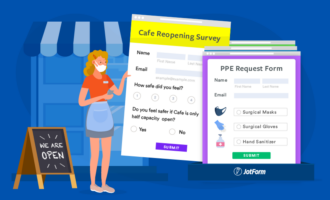



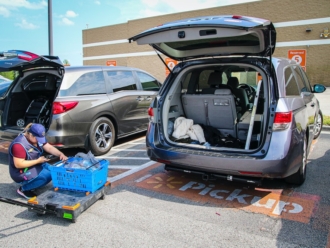

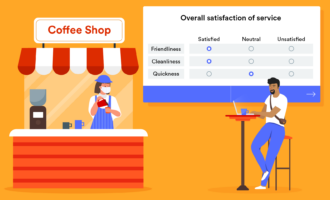

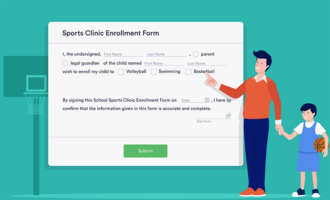





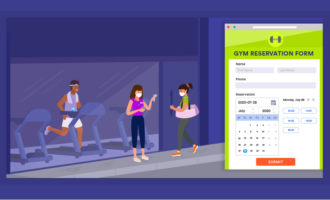


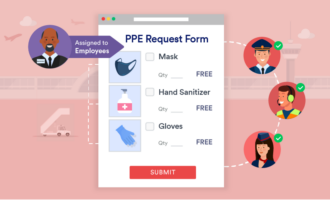




Send Comment: